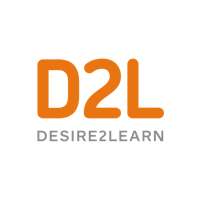The idea of using a learning management system (LMS) to deliver professional learning and development to K-12 educators is not new—but it’s not quite mainstream, either. Face-to-face is still the ascendant modality, but LMS-for-PD is gaining serious traction, thanks to the efforts of educational IT innovators like Ken Dirkin.
Dirkin is the Director of Online Professional Learning at Michigan Virtual, a nonprofit provider of digital learning solutions for the state’s K-12 schools. He’s been involved with cutting-edge educational technology, including virtual worlds, mobile applications, new media, and the web, for more than 15 years.
Michigan Virtual has been in the online education space for two decades. The organization has been providing LMS-based professional learning for the state’s educators since 2004. “We figured, what’s good for the students is good for the teachers,” says Dirkin.
EdSurge spoke with Dirkin about how an LMS can make professional learning more affordable and personalized and keep master teachers engaged—as well as what professional learning might look like in the future. (Hint: Think AI.)
EdSurge: How does an LMS impact the types of professional learning a district offers to teachers?
Ken Dirkin: The role of the LMS in professional learning is essentially the same as it is for student learning. One key difference: an LMS used for professional learning gives teachers a chance to practice in the same environments their students use.
Because it’s an online system, it has the potential to expand dramatically the number and types of courses a district is able to offer. We offer over 300 professional learning courses that you can take anywhere, anytime. And because you can access them with your mobile devices—your phone, your tablet, your laptop—there’s a pervasiveness in the way you get to your courses.
LMS-based professional learning gets us away from the ‘sit-and-get’ and ‘one-size-fits-all’ model, and moves toward personalized learning. I joke that we do macro and micro personalization. The 300 courses I mentioned are personalized in the sense that there’s probably a course in there that fits your needs. And then there’s the micro level of personalization, where you begin thinking about how to adapt a course for the needs of the individual learner, which requires our systems to be perceptive and to use data intelligently.
What problems does using an LMS for professional learning solve?
One of the major downsides of face-to-face professional learning, for which there is still an institutional bias, is that it’s just not scalable. Districts have to release teachers from their classrooms to attend, but it’s getting hard and harder to find substitutes. So, how do you reach your teachers effectively when you can’t even get time with them? I think that’s a problem that’ll spark a rapid adoption of these platforms for professional learning.
Using an LMS for professional learning is also more cost effective. It might seem more expensive up front, but there are studies out there showing how districts spend five to ten times more money on professional learning than they actually report. In Michigan, professional learning expenses reportedly account for between 2% and 3% of an average school district’s budget—specifically, registration for training and bringing in a speaker. But this doesn’t include the cost of travel time or substitute teachers. So, the actual percentage is more like 5% to 10%.
A lot of those costs can be reduced with online options. For example, we did a training for the Michigan Department of Education on how to administer state assessments. It was the first time we ever did this; they usually handed out 48-page paper handbooks. They asked us to put together something online. At the second largest school district in Michigan, Utica Community Schools, almost everyone on their staff took the course. It was a no brainer to say, okay, all you guys go take this half-hour course instead of us handing you 1,600 printed manuals.
What cultural shifts are driving change in professional learning offerings?
We’re hearing from teachers in their 50s who want to stay current. They’re looking for options, but they’re already master educators. They have two master’s degrees and they’ve gone to every training they can get their hands on, but that’s still not enough to keep them challenged and motivated. We’ve been trying to develop experiences for them that are different. For example: MyPD is a program in which they define their problem of practice, bring in the resources they’re going to use to tackle it, build an implementation plan, and then send that on to us to provide feedback. This type of learning is really important to people working their way toward mastery and beyond, and an LMS is the best way to deliver it.
How did you choose an LMS to deliver professional learning?
We needed a platform that would help us to facilitate at-scale courses. We needed tools that would allow us to communicate clearly with the participants and use their data to help them identify their needs, where they are, and what they need to be doing. We also looked for a solution that would integrate easily with other opportunities, and allow us to easily deploy videos and multimedia resources quickly. And, because we report on our activities to the Michigan legislature, we also needed to be able to aggregate data about the experiences that were happening in our system. D2L’s Brightspace Core really hit the right note for what we were looking for in a professional learning platform.
Interested in learning more about professional learning for teachers? Check out the on-demand webinar, How Microcredentials Can Boost Professional Learning, sponsored by D2L.
What’s the future of LMS-enabled professional learning?
In my vision of the future in this space, I see systems that are able deliver professional via the Internet of Everything. Your Amazon Echo at home. The iPhone in your pocket. The radio in your car. The device that gets installed in your head for augmented reality experiences—whatever it is. And I don’t think we’re going to get there without advanced neural networks and AI agents to help us figure out what that fabric looks like.
What kind of advice would you give to school leaders who are looking for an LMS for professional learning?
You don’t have to do this alone. Lots of groups and districts are doing professional learning online. One example is the Virtual Learning Leadership Alliance, a group we have been part of for a number of years. It’s an association of chiefs of virtual programs. A number of the state virtual school members partner with D2L, and that helped in the adoption of Brightspace for us. The thing to keep in mind is, we’re all at the beginning of the curve, so it’s a pretty amicable group right now. That’s something I’d definitely take advantage of.



